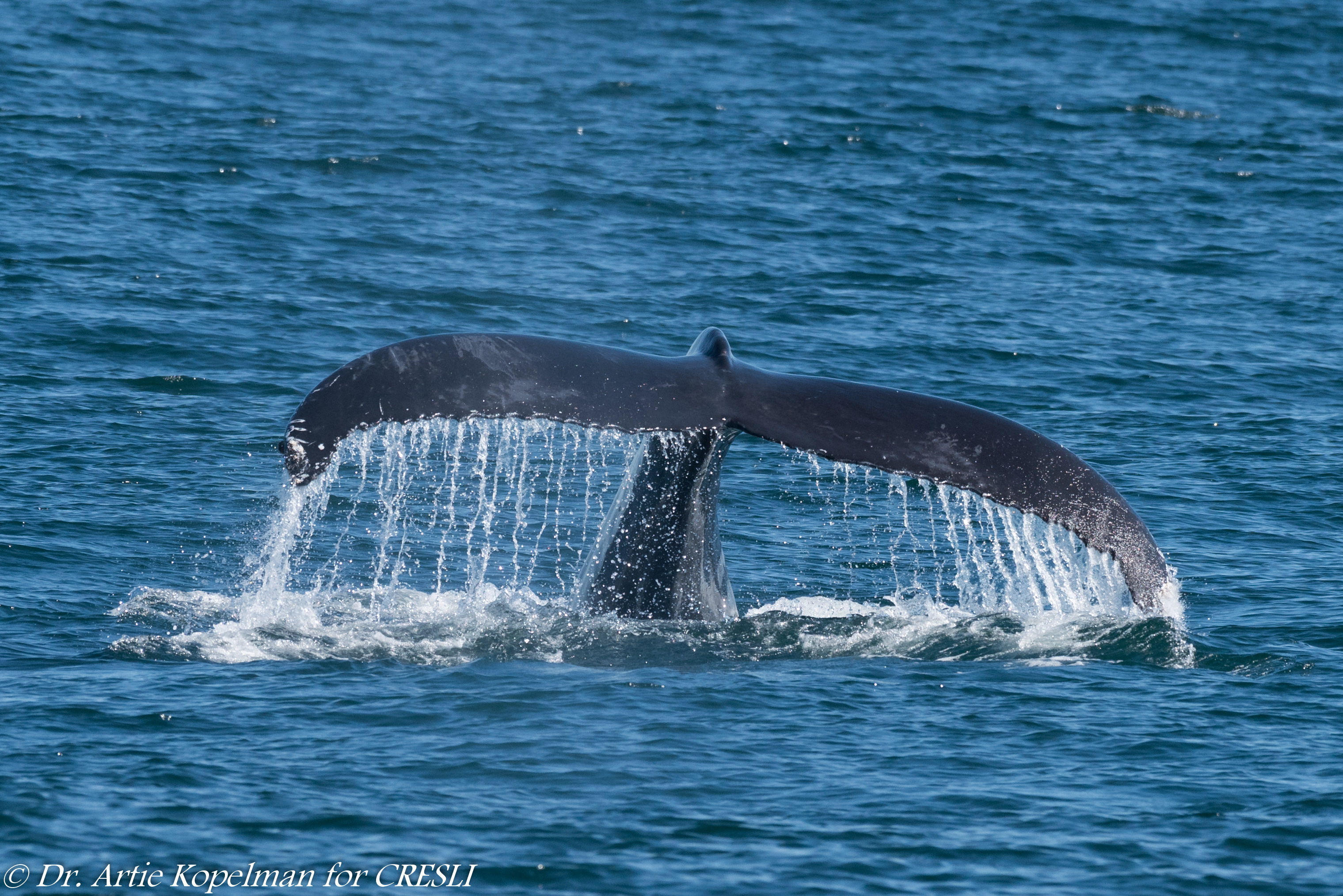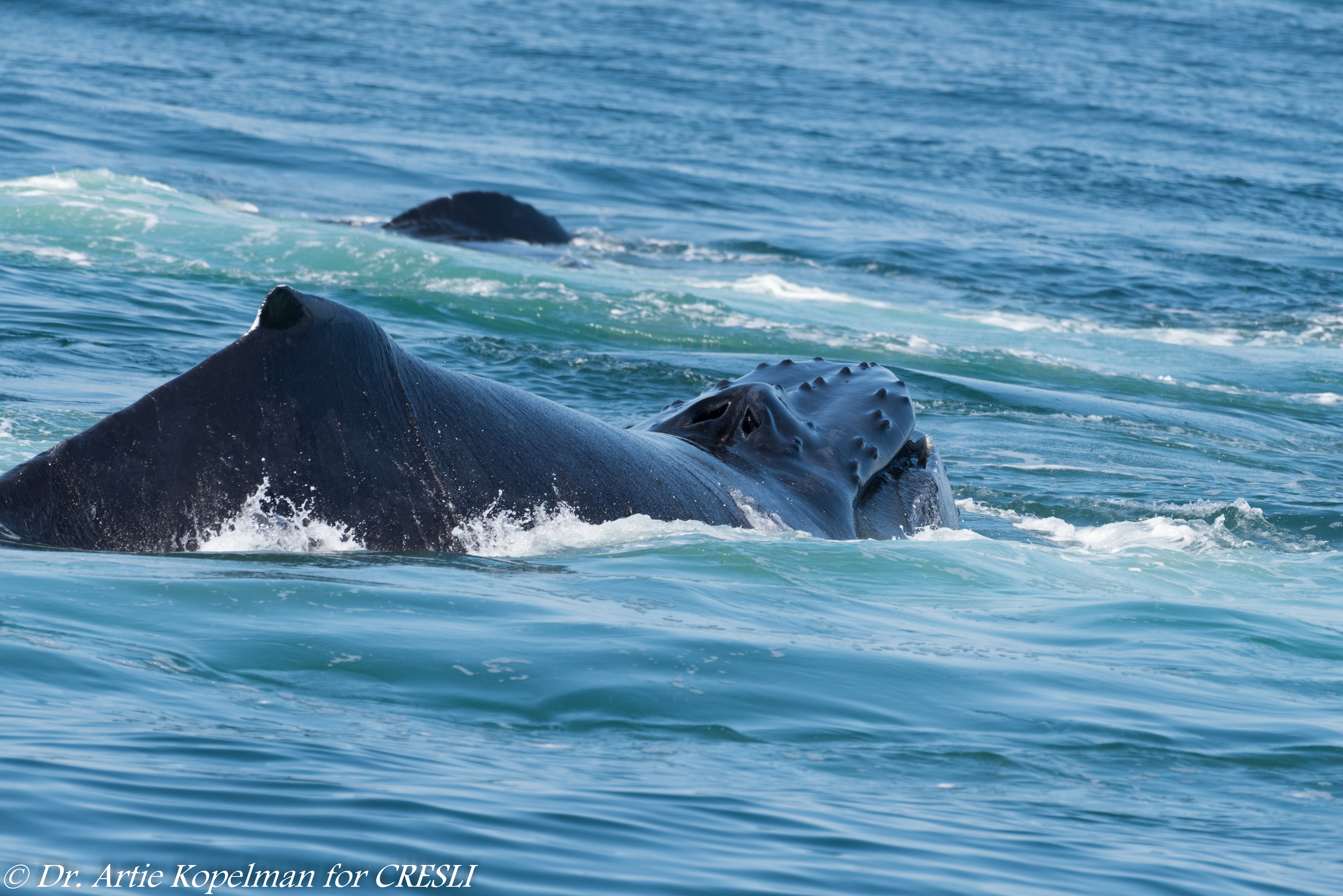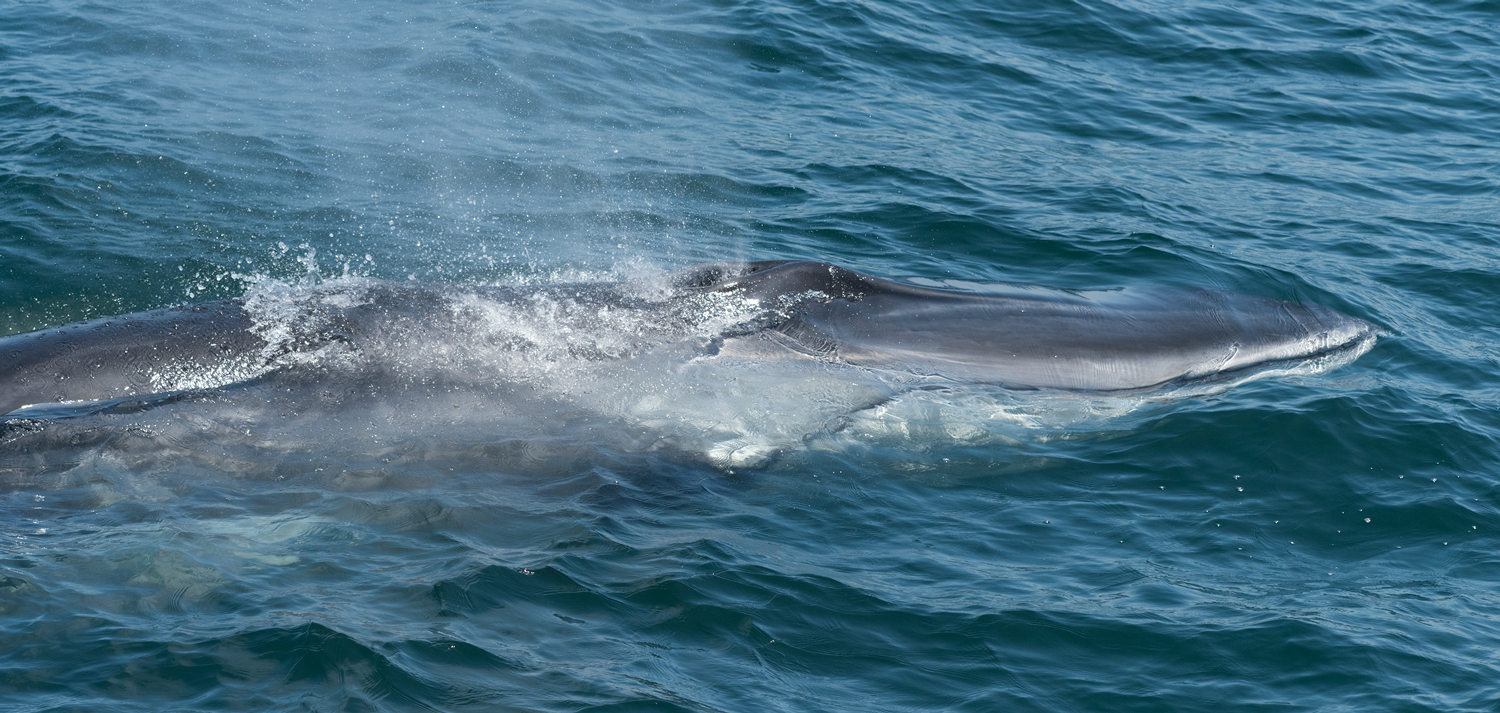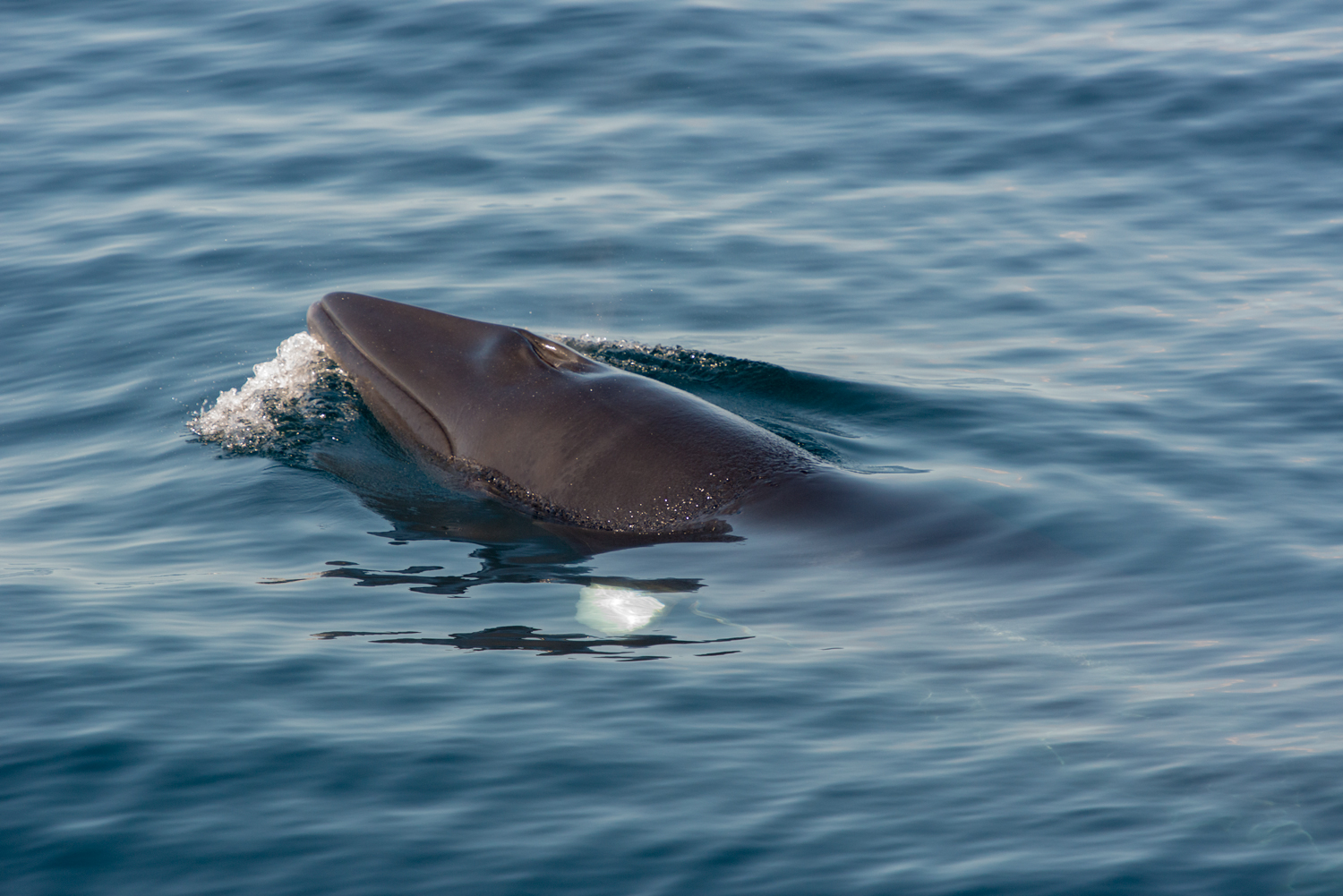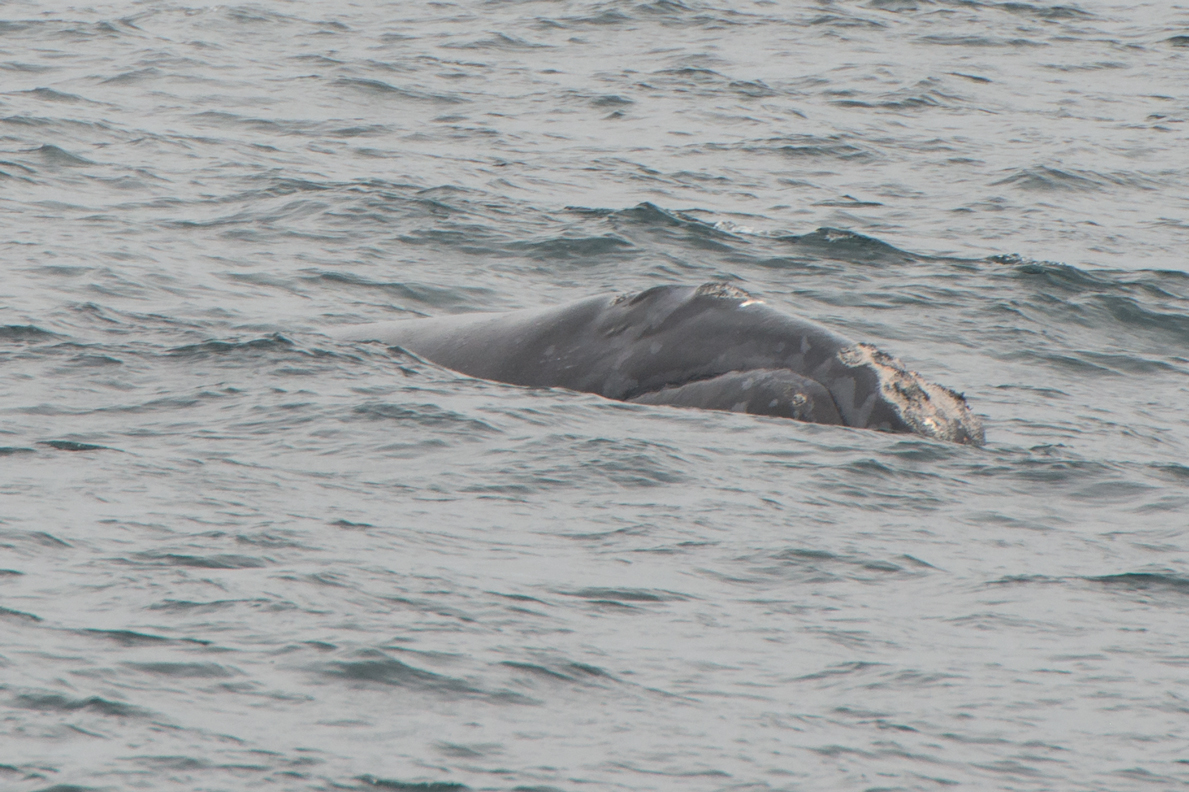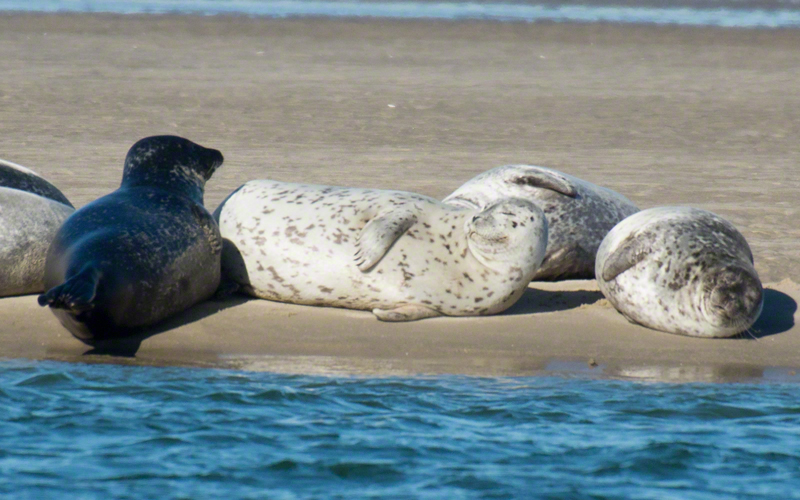Research Abstracts
CRESLI Research abstracts
Occurrence of Baleen Whales in the New York Bight, 1998–2017: Insights from Opportunistic Data
Emily Chou1*, Melinda L. Rekdahl1, Arthur H. Kopelman2, Danielle M. Brown3,4, Paul L. Sieswerda3, Robert A. DiGiovanni Jr.5, and Howard C. Rosenbaum1
1Wildlife Conservation Society, Ocean Giants Program, New York, USA., 2Coastal Research and Education Society of Long Island, Inc., New York, USA.,3Gotham Whale, New York, USA.,4Rutgers University, Department of Ecology, Evolution, and Natural Resources, New Jersey, USA.,5Atlantic Marine Conservation Society, New York, USA.
ABSTRACT
The New York Bight is undergoing rapid anthropogenic change amidst an apparent increase in baleen whale sightings. Though survey efforts have increased in recent years, the lack of published knowledge on baleen whale occurrence prior to these efforts impedes effective assessments of distributional or behavioral shifts due to increasing human activities. Here we synthesize opportunistic sightings of baleen whales from 1998–2017, which rpresents the majority of sightings data prior to recent survey efforts, and which are largely unpublished. Humpback and fin whales were the most commonly sighted species, followed by North Atlantic right whales and North Atlantic minke whales. Important behaviors such as feeding and nursing were observed, and most species (including North Atlantic right whales) were seen during all seasons. Baleen whales overlapped with multiple anthropogenic use areas, and all species, but of particular importance North Atlantic right whales, were sighted outside of the spatial and temporal bounds of the Seasonal Management Areas for North Atlantic right whales. These opportunistic data are vital for providing a baseline and context of baleen whales in the New York Bight prior to broad-scale efforts and facilitates interpretation of current and future observations and trends, which can more accurately inform effective management and mitigation efforts.
Journal of the Marine Biological Association of the United Kingdom 1–7. https://doi.org/10.1017/S0025315422000716
Contact Dr. Artie Kopelman via email to get a pdf copy
Brown DM et al (2022). Site fidelity, population identity and demographic characteristics of humpback whales in the New York Bight apex.
D. M. Brown, J. Robbins, P. L. Sieswerda, C. Ackerman, J. M. Aschettino, S. Barco, T. Boye, R. A. DiGiovanni Jr., K. Durham, A. Engelhaupt, A. Hill, L. Howes, K. F. Johnson, L. Jones, C. D. King, A. H. Kopelman, M. Laurino, S. Lonergan, S. D. Mallette, M. Pepe, C. Ramp, K. Rayfield, M. Rekdahl, H. C. Rosenbaum, R. Schoelkopf, D. Schulte, R. Sears, J. E. F. Stepanuk, J. E. Tackaberry, M. Weinrich, E. C. M. Parsons, and J. Wiedenmann
Humpback whales (Megaptera novaeangliae) exhibit maternally driven fidelity to feeding grounds, and yet occasionally occupy new areas. Humpback whale sightings and mortalities in the New York Bight apex (NYBA) have been increasing over the last decade, providing an opportunity to study this phenomenon in an urban habitat. Whales in this area overlap with human activities, including busy shipping traffic leading into the Port of New York and New Jersey. The site fidelity, population composition and demographics of individual whales were analysed to better inform management in this high-risk area. Whale watching and other opportunistic data collections were used to identify 101 individual humpback whales in the NYBA from spring through autumn, 2012–2018. Although mean occurrence was low (2.5 days), mean occupancy was 37.6 days, and 31.3% of whales returned from one year to the next. Individuals compared with other regional and ocean-basin-wide photo-identification catalogues (N = 52) were primarily resighted at other sites along the US East Coast, including the Gulf of Maine feeding ground. Sightings of mother-calf pairs were rare in the NYBA, suggesting that maternally directed fidelity may not be responsible for the presence of young whales in this area. Other factors including shifts in prey species distribution or changes in population structure more broadly should be investigated.
Journal of the Marine Biological Association of the United Kingdom 1-9. https://doi.org/10.1017/S0025315422000388
Contact Dr. Artie Kopelman via email to get a pdf copy
Occurrence and distribution of large whales in the New York Bight: implications for marine spatial planning
Ricardo Antunes, Arthur Kopelman, Paul Sieswerda, Robert DiGiovanni, Chris Spagnoli, Catherine Granton, Howard Rosenbaum
PRESENTED AT THE SOCIETY FOR MARINE MAMMALOGY 21ST BIENNIAL MEETING, SAN FRANCISCO, CA DECEMBER 2015
Large whales can be found year-round in the waters of the New York Bight, which is in the migratory pathways for several endangered and recovering species. Information on whale distribution and behavior in the New York Bight could be improved, and baseline and more in-depth information is needed for management and conservation planning, especially in the context of growing concerns about the impacts of ship strikes, entanglements and planning for offshore wind energy. Here we present 463 humpback and 1348 fin whale previously unpublished records, spanning between 1981 and 2014, collected from whale watching operations in the New York Bight. Sighting positions were used to model the spatial patterns of occurrence as a function of static (depth, distance from coast, distance from 200m isobath) and dynamic (Chlorophyll a concentration, sea surface temperature) environmental covariates, using boosted logistic regression trees. Modeled distribution for both species' was mostly explained by static variables with some contribution from surface temperature for humpback whales. Predicted humpback whale distribution was more coastal than for fin whales. To allow the spatially explicit assessment of the risks to whales from anthropogenic activities we overlaid the modeled whale species' distribution maps on the spatial distribution of potentially impacting anthropogenic activities such as shipping intensity, fisheries activity and renewable energy developments. An index combining the modeled whale spatial distribution and spatial distribution of anthropogenic activities was calculated and results are discussed in the context of marine spatial planning for the New York seascape.
The incidence of bent dorsal fins in free-ranging cetaceans
F. Alves, J. R. Towers, R. W. Baird, G. Bearzi, S. Bonizzoni, R. Ferreira, Z. Halicka, A. Alessandrini,1, A. H. Kopelman, C. Yzoard, M. H. Rasmussen, C. G. Bertulli, E. Jourdain, A. Gullan, D. Rocha, K. Hupman, M.-T. Mrusczok, F. I. P. Samarra, S. Magalhaes, C. R. Weir, J. K. B. Ford and A. Dinis 2017. Journal of Anatomy.
Laterally bent dorsal fins are rarely observed in free-ranging populations of cetaceans, contrary to captivity, where most killer whale Orcinus orca adult males have laterally collapsed fins. This topic has been poorly explored, and data/information on its occurrence and possible causes are limited. The present study: (i) undertakes a review of the available information on bent dorsal fins in free-ranging cetaceans, and updates it with new records, (ii) reports on the proportion of bent fins in different study populations, and (iii) discusses possible causes. An empirical approach based on bibliographic research and compilation of 52 new records collected worldwide resulted in a total of 17 species of cetaceans displaying bent dorsal fins. The species with the highest number of records (64%) and from most locations was O. orca. On average, individuals with bent dorsal fins represent < 1% of their populations, with the exception of false killer whales Pseudorca crassidens and O. orca. While line injuries associated with fisheries interactions may be the main cause for P. crassidens, and the vulnerability to health issues caused by the evolutionary enlargement of the fin may be the cause for O. orca adult males, factors contributing to this abnormality for other species are still unclear. The occurrence of bent dorsals could be influenced by a set of variables rather than by a single factor but, irrespective of the cause, it is suggested that it does not directly affect the animals’ survivorship. While still rare in nature, this incident is more common (at least 101 known cases) and widespread (geographically and in species diversity) than hypothesized, and is not confined only to animals in captive environments. Investigation into the occurrence of bent fins may be an interesting avenue of research.
https://doi.org/10.1111/joa.12729
Population identity and residency characteristics of humpback whales (Megaptera novaeangliae) in the New York Bight apex
D.M. Brown1,2*, P.L. Sieswerda2, J. Robbins3, T. Boye4, L. Jones5, A. Kopelman6, M. Laurino7, S. Mallette8, M. Pepe9, C. Ramp10, and E.C.M. Parsons1
- Department of Environmental Science and Policy, George Mason University, 2300 University Drive, Fairfax, Virginia, 22030, U.S.A.
- Gotham Whale, 10 Bay Street Landing A5G, Staten Island, NY 10301, U.S.A.
- Center for Coastal Studies, 5 Holway Avenue, Provincetown, Massachusetts 02657, U.S.A
- Greenland Institute of Natural Resources
- Allied Whale
- Coastal Research and Education Society of Long Island
- Cape May Whale Watch and Research Center
- Virginia Aquarium and Marine Science Center
- Whale and Dolphin Conservation
- Mingan Island Cetacean Study
*Corresponding author
Abstract for World Marine Mammal Conference 2019
Cetacean research has historically been limited in the New York Bight apex (NYBA), which includes the Port of New York and New Jersey and adjacent waters. However, increased sightings, documented mortalities, and high levels of commercial and recreational activity suggest the need for a better understanding of humpback whales in this area. Opportunistic sightings and photo-identification data of 54 individuals identified from 2011-2016 were used to determine occupancy, occurrence, and annual return. Photographs were also shared with regional and basin-wide catalogs to determine the origins of these individuals and their exchange with other areas. Mean occupancy length in the NYBA was 30.5 days, mean occurrence was 2.3 days, and mean rate of return was 39.1%. Individuals sighted in the NYBA had histories in the greater New York Bight area (Cape May, NJ and Montauk, NY) and in the greater mid-Atlantic region (Virginia). There were also matches to primary feeding grounds, including 36% (n=18) to the Gulf of Maine and 2% (n=1) to Newfoundland. Sighting records suggest that most individuals were immature when seen in the NYBA. There is currently no evidence of within-year movement between the NYBA and primary feeding grounds. However, there were within-year sightings with both Montauk and Cape May suggesting that individuals may utilize the entire New York Bight during the feeding season. The NYBA may be of increasing importance to juvenile humpback whales as a supplementary feeding ground.
Distribution and occurrence of large whales in New York Bight prior to 2017: establishing baselines and informing management
Emily Chou1, Melinda L. Rekdahl1, Ricardo Antunes1, Christopher Spagnoli2, Artie H. Kopelman3, Paul L. Sieswerda4, Robert DiGiovanni5, Caroline Good6, and Howard C. Rosenbaum1
- Ocean Giants Program, Wildlife Conservation Society, Bronx, New York 10460 USA
- Conservation Innovation, Wildlife Conservation Society, Bronx, New York 10460 USA
- Coastal Research and Education Society of Long Island (CRESLI), West Sayville, New York 11796 USA
- Gotham Whale, Staten Island, New York 10301 USA
- Atlantic Marine Conservation Society, Hampton Bays, New York 11946 USA
- Duke University Marine Laboratory, Beaufort, North Carolina 28516 USA
2016 1st Place Intel Long Island Science & Engineering Fair (LISEF) Round 2
Knowledge concerning the distribution of cetaceans in the northeast Atlantic Ocean is limited; information pertaining to cetacean population patterns over time off the coastline of Long Island is even less well understood. Geospatial analysis of data compiled by the Coastal Research and Education Society of Long Island (CRESLI) beginning in the 1980s through the present may prove useful in providing a clear picture of general population and distribution trends over time. The dissemination of information regarding how and why cetaceans utilize their offshore Long Island habitat is much needed as various environmental management issues emerge, such as an Alternative Energy Management Plan for offshore wind turbines that has recently begun its first stages of construction, along with entanglement and boat strikes which are common further north and west of this study location. CRESLI data, for the years 1989-1995, 1997-2000, and 2009-2015 was used for this study and analyzed geospatially using ESRI®’s ArcMAP Version 10.3 and spatial statistics tools for cetacean count, sea-surface temperature, prey density, and observation of calves over time. The observations were for a cruise track area of approximately 300 square miles located south of Montauk Point, Long Island, New York. The data were transcribed from ship logs into Excel, added to ArcMap as X-Y data, and projected to NAD83 UTM Zone 18N. Geographic distributions were analyzed using spatial statistics tools including mean center and standard deviational ellipses to determine where cetaceans and prey shifted annually and how those features were oriented over the study period. Patterns were identified using the average nearest neighbor and Ripley’s K-function to establish whether the cetacean counts and prey density were clustered or dispersed. Additionally an optimized hot spot analysis was conducted to identify whether hot spots for high cetacean counts overlay hot spots for high prey density over time. A multivariate grouping analysis was conducted to determine which feature was a statistically significant factor for cetacean count by cluster. The results suggest that cetacean clusters have shifted annually, are oriented southwest-northeast, and that both cetacean counts and prey density by location are clustered and do not occur by chance. Calves are associated with high prey density hot spots. Some clusters of cetacean counts by region are more influenced by sea-surface temperature, while others are more influenced by prey density and sea-surface temperature combined. Over 260 cetaceans have been observed utilizing the habitat within the Deepwater Wind energy location off of Block Island. These results are important to better understand where cetaceans utilize habitat for foraging as adults and with calves throughout the New York region and how they are connected to the Gulf of Maine stock as 14 adults and 2 claves from that group have been confirmed in this study location. As 3/13 great whale species in this group are classified as endangered/ vulnerable, it is important to understand their distribution to best protect their habitat range and migratory corridors in the future
Kopelman, A. H. and S. S. Sadove. 1995. Ventilatory rate differences between surface-feeding and non-surface feeding fin whales (Balaenoptera physalus) in the waters off eastern Long Island, New York, USA, 1981-87. Marine Mammal Science 11(2):200-208.
Observations of feeding and ventilatory behavior of individual fin whales (Balaenoptera physalus) were made from various vessels during the months of May - September, 1981-87, in the waters off eastern Long Island, N.Y., U.S.A.. Intervals between blows were measured and recorded to the nearest second. Information about behavior was recorded, as were location, depth, and surface temperature at sounding dives. Animals observed feeding at the surface were noted as such, all others were considered non-surface feeding. Data were compiled by individual, month, year, and analyzed for mean interblow interval during surface activity bouts; mean dive duration; and overall mean blow interval.
Overall mean blow intervals (± s.e.) of 47.89 ± 0.81s for feeding (n = 10411), and 57.92 ± 0.97s for non-surface feeding animals (n = 11024), differed significantly (Mann-Whitney U, p < .001). Interblow intervals for surface activity bouts (± s.e.) of 12.29 ± 0.05s for feeding (n = 7894), and 13.58 ± 0.06s, for non-surface feeding animals (n = 8187), also differed significantly (Mann-Whitney U, p < .001), as did mean dive duration (159.53 ± 2.16s, n = 2517, for feeding animals; 185.86 ± 2.53s, n = 2837, for non-surface feeding animals). Yearly comparisons of blow intervals between feeding and non-surface feeding animals during surface activity bouts yielded significant differences for each year except 1981, while comparisons of dive durations yielded significant differences for all years except 1981, 1982, and 1985.
https://doi.org/10.1111/j.1748-7692.1995.tb00518.x
RESIDENCY PATTERNS FOR FIN WHALES (Balaenoptera physalus) OFF LONG ISLAND, NEW YORK.
Long, J. A.1 , Gorgone A. M. 2, Sadove, S. S. 3, Forestell, P. H. 4, Kopelman, A.H. 5
(1, 2, 4) Long Island University, Southampton College, (3, 5) Coastal Research and Education Society of Long Island, Inc.
Surveys of fin whales, (Balaenoptera physalus) were conducted during the months of May through September, from 1979 through 1996, off Long Island, New York. Surveys primarily occurred aboard whale watching vessels. When possible, individual identification photographs were collected on the cruises. Photographs from 1981 through 1988 were compared for matches of individuals based upon the technique described by Agler et al. All identification type photographs were entered into a computer database to facilitate a more rapid matching of individuals. Animals were keyed into the database based upon dorsal fin type, chevron, and/or nicks and scars. Initial matching was based upon these features. Final matches were made by manually examining each slide and matching at least 5 major features for each whale.
Individual fin whales were found to occupy the region on a recurring basis over numerous years. In some instances occupancy was repetitive on an annual basis, while in other instances gaps of one or more years occurred. Individual fin whales were found to occupy the region for a period of up to 9 weeks, however, many animals were not photographed on a continuous or daily basis. This may not be indicative of movement from the area as surveys throughout the entire occupancy area were often not possible aboard the platform vessel. Residency diagrams presented with this study demonstrated a clear preference to return to the region over a period of years.
In 1987, a very large number of new animals were seen in the area, as some of the largest numbers of whales found in the region were observed. In our analysis, this year had to be considered anomalous based upon the extremely large number of whales found in the region. The large number of whales seen has not been repeated since that time.
The resighting rate indicates that a significant number of animals seen annually in the region were previously sighted individuals. Based upon the high resighting rate and the long term annual recurrence of individual fin whales, this area may be a significant seasonal residency site. However, animals were not always seen in the same areas either within one year or over a period of years. Resightings of whales indicate a use of the whole area and not a specific trend to one site. Consequently, movement throughout the area would be expected based upon our analysis
ADDITIONAL
MEAGHAN MCCORMACK: A THESIS SUBMITTED TO THE FACULTY OF THE UNIVERSITY OF MIAMI IN PARTIAL FULFILLMENT OF THE REQUIREMENTS FOR THE DEGREE OF MASTER OF SCIENCE CORAL GABLES, FLORIDA MAY 2015
